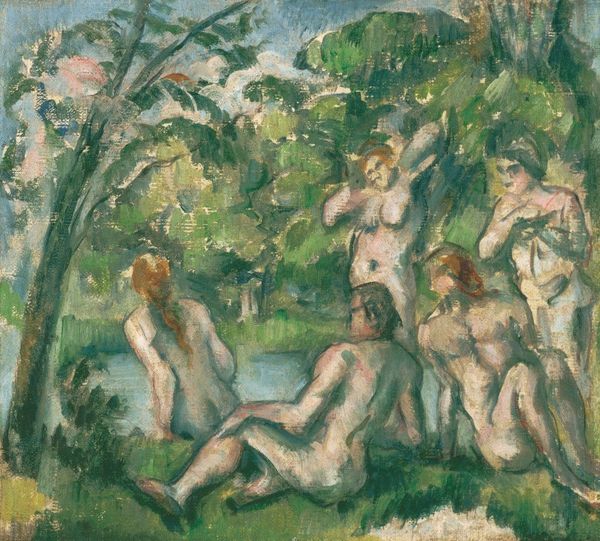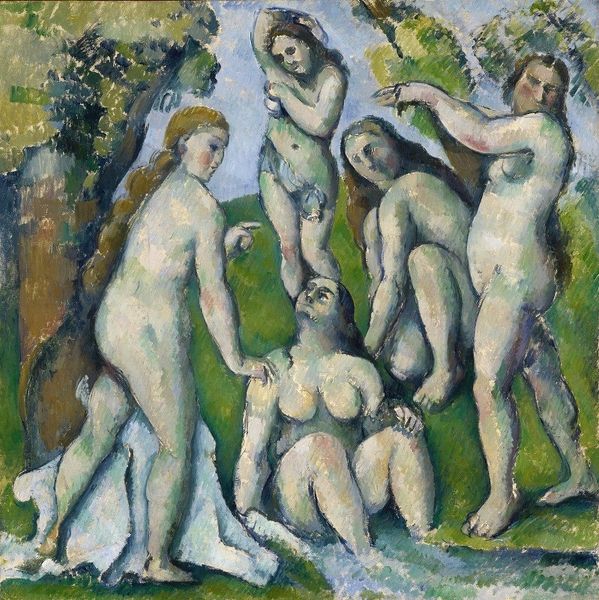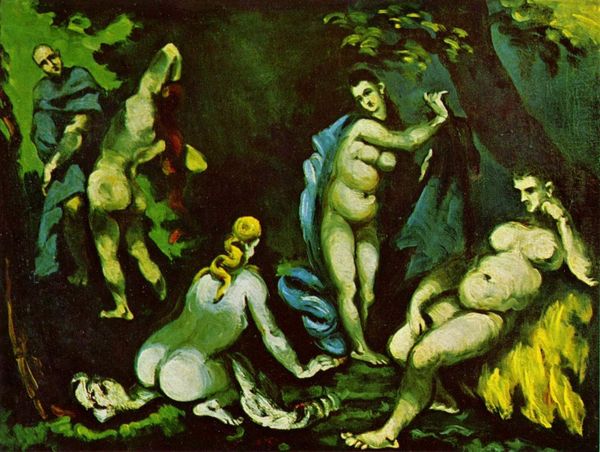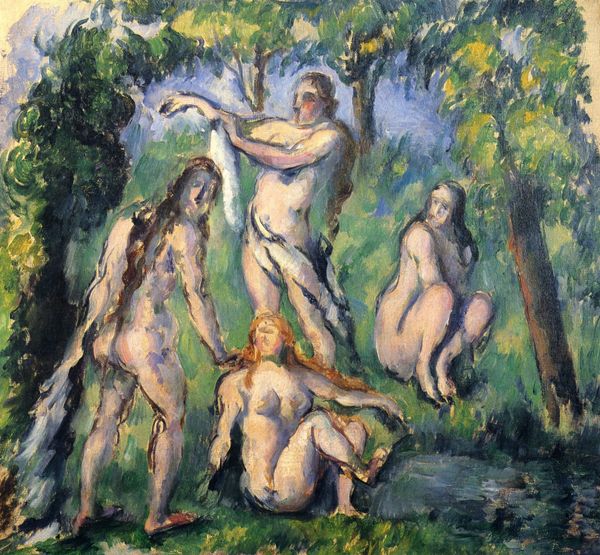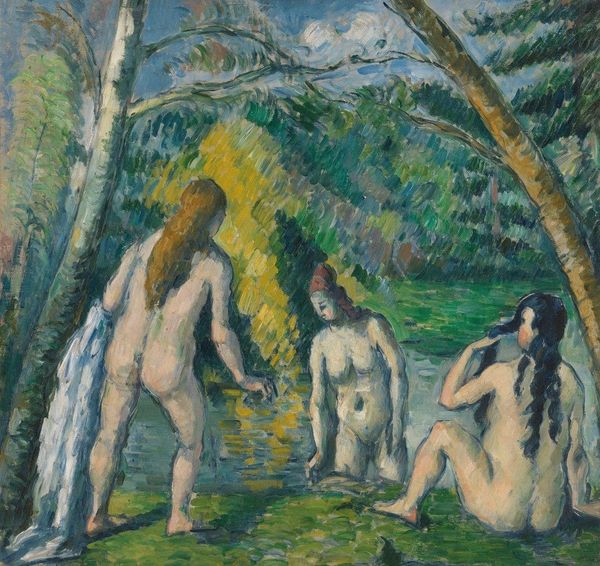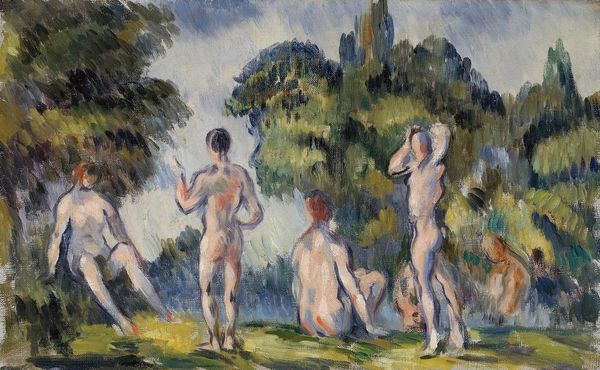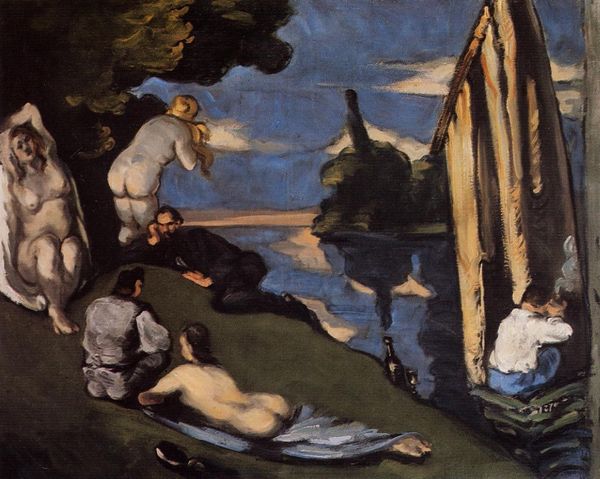
Copyright: Public domain
Paul Cézanne created this painting, Five Bathers, in France towards the end of the 19th century, a period of rapid social and artistic change. Cézanne, often seen as a bridge between Impressionism and Cubism, was deeply engaged with the question of how painting could represent the world anew. The subject of bathers was of course a well-worn trope going back centuries and usually referencing idealized classical forms. But here we see something different: a challenge to those traditions. The figures are rendered with a frankness that departs from conventional beauty standards, and the setting is less an idealized Arcadia and more a rugged, almost primal space. Cézanne's painting invites us to question the very institutions that define art. Was he consciously critiquing academic norms, or simply pursuing his own vision? Art history provides the tools to investigate these questions, examining the social and institutional contexts that shaped Cézanne's work, and in turn, how his work challenged those contexts.
Comments
No comments
Be the first to comment and join the conversation on the ultimate creative platform.
